Results 4,391 to 4,400 of 12096
Thread: Anandtech News
-
10-09-14, 02:30 PM #4391
Anandtech: An Introduction to Semiconductor Physics, Technology, and Industry
Learning about semiconductor physics and technology can be a daunting task. While it’s easy enough to understand what a transistor does and some of the terminology thrown around, getting into the deeper aspects of how things work is tough. A great deal of the information on the internet is simply too cryptic to understand, even for those that want to learn. If you've wanted a primer to help bridge the gap, read on as we explore the lower level details of semiconductor physics and technology.
More...
-
10-09-14, 02:30 PM #4392
Anandtech: Sony Announces the Xperia Z3v for Verizon
Consumers in the United States have typically been unable to purchase Sony smartphones if their carrier is Verizon. The carrier's lineup has been devoid of any Xperia offerings for quite some time. One exception was the Xperia Play which launched exclusively on Verizon in the United States 3 years ago. Since then we haven't seen much in the way of collaboration between the two companies beyond a few tablet launches. That ends today with the launch of the Sony Xperia Z3v on Verizon.
At its core, the Z3v is the same as the Xperia Z3 that Sony unveiled earlier this year at IFA. It's Sony's flagship smartphone, with a 5.2" 1920x1080 IPS display, 3GB of RAM, 32GB of NAND with 128GB MicroSDXC expansion, a 20.7MP camera, and Qualcomm's MSM8974AC with 4 Krait 400 cores at 2.5GHz.
There are a few changes with the Verizon exclusive Z3v. The design of the chassis has some alterations. The sides of the phone in particular are flatter than the international Z3, and because of this the Z3v looks more visually similar to the Xperia Z2 than the Z3. The phone also has a couple of improvements over the Z3. The first is the addition of Qi inductive charging, and the other is a small boost in battery capacity from 11.78Whr to 12.16Whr.
The Z3v will be launching on October 23 for $199 on a 2 year term. Users who are interested in more information can check out Verizon's sign up page for the new device.
More...
-
10-09-14, 05:03 PM #4393
Anandtech: Lenovo Launches Refreshes Of The Yoga Line
Today in London, Lenovo took the wraps off of a refresh of the entire Yoga series, starting with the new Yoga 3 Pro, then moving to the new Yoga Tablet 2, and finally, the release of a new member to the Yoga line – the Yoga Tablet 2 Pro. The key feature of the Yoga series is flexibility, hence the name, and for the Yoga products it comes down to the hinge. The Lenovo Yoga line were the first laptops to feature the fold around hinge, and then later they brought a shorter version of that hinge to their Yoga tablet lines in order to allow for multiple usage modes as well.
The Yoga 2 Pro, which we reviewed earlier this year, is a 13.3 inch convertible notebook which has a hinge that can be opened 180° to let the laptop be used in the stand mode, tablet mode, and tent mode, as well as the traditional notebook mode. It is a very well implemented feature with the Yoga 2 Pro, but Lenovo thought they could do better, and with today’s announcement of the Yoga 3 Pro, Lenovo has revealed a new “Watchband Hinge” which allows the laptop to be even thinner and lighter than the Yoga 2 Pro. The new model is 17% thinner at 12.8 mm thick, and 14% lighter than the outgoing model at 1.19 kg. The hinge now has six focus points, up from two on the Yoga 2 Pro, and the watchband hinge is constructed of more than 800 pieces of steel and aluminum. The 13.3 inch 3200x1800 QHD+ display is back, but we do not know yet if it still has a RGBW matrix or not. The display is now covered in Corning Gorilla Glass. One weak spot of the Yoga 2 Pro is the audio quality, especially when using the device in multiple modes which can have the speakers pointed away from the listener. Lenovo hopes to address this shortcoming with JBL speakers with Waves Audio which adjusts the audio depending on which mode the device is in. The Yoga 3 Pro is powered by the Intel Core-M processor, which should mean an increase in battery life (Lenovo claims 9 hours) and the possibility of it being fanless. Storage options are up to 512 GB of SSD, and Wi-Fi is now 802.11ac. There are three colors available, with Clementine Orange, Platinum Silver, and Champagne Gold. Prices start at €1,599 and the new device will be available at the end of October.
Next up on the docket was the Yoga Tablet refresh. The Yoga Tablet was available in both 10 inch and 8 inch screen sizes, with Android as the operating system. The new Yoga Tablet 2 models will also come in both 10 inch and 8 inch versions, but now the Tablet 2 is available with either Android 4.4 or Windows 8.1. The original Yoga Tablet had a barrel hinge on one side, which allowed the user to use the tablet in a stand mode, tilt mode, or the hold mode, and the Tablet 2 line will feature the new “Hang Mode” which is simple a slot cut in the stand to allow it to be hung from something. The hinge barrel allowed the Yoga Tablet a larger battery than other similar sized devices, and the Tablet 2 promises the same 18 hours of battery life. The screen resolution is now 1920x1200, with dual front speakers and LTE is available on both 8 inch and 10 inch Android versions, and the 10 inch Windows version. The CPU of choice for all of the Yoga Tablet 2 models is now the Intel Atom processor, which Lenovo is claiming gives them three times the CPU performance and twice the GPU performance of the outgoing models. The 8 and 10 inch Android models will be on sale starting today at a starting price of €229 and €299, respectively. The 10 inch Windows version will be available in late October for €399, and the 8 inch Windows model will come in November starting at €249.Lenovo Yoga Laptop Yoga 3 Pro CPU/GPU Intel Core M-70 (2 core, 4 thread, 1100 MHz to 2600 MHz, HD 5300 GPU, 4.5 W TDP) RAM Up to 8 GB LPDDR3L Storage Up to 512 GB SSD Display 13.3" 3200x1800 QHD+ IPS touchscreen Network 802.11ac Wi-Fi, Bluetooth 4.0 Dimensions 330 x 228 x 12.8 (mm) Weight 1.19 kg Camera 720p Webcam Battery up to 9 hours OS Windows 8.1 Speakers JBL Stereo speakers with Waves Audio certification
Lenovo Yoga Tablet 2 Yoga Tablet 2 8" Yoga Tablet 2 8" with Windows Yoga Tablet 2 10" Yoga Tablet 2 10" with Windows Yoga Tablet 2 Pro CPU Intel Atom Processor Z3745 (2M cache, 4 cores, up to 1.86 GHz) Display 8" 1920x1200 IPS Touchscreen 10" 1920x1200 IPS Touchscreen 13.3" 2560x1440 IPS Touchscreen Memory 2GB LP-DDR3 memory Graphics Intel HD Integrated Graphics (311 MHz Base, 778 MHz Burst) Storage 16 GB eMMC plus Micro SD up to 64 GB 32 GB eMMC plus Micro SD up to 64 GB 16 GB eMMC plus Micro SD up to 64 GB 32 GB eMMC plus Micro SD up to 64 GB Connectivity Wi-Fi 802.11 b/g/n Dual-Band; BT 4.0; Optional 4G in some markets Wi-Fi 802.11 b/g/n Dual-Band; BT 4.0 Wi-Fi 802.11 b/g/n Dual-Band; BT 4.0; Optional 4G in some markets Wi-Fi 802.11 b/g/n Dual-Band; BT 4.0; Optional 4G in some markets; Micro HDMI Wi-Fi 802.11 b/g/n Dual-Band; BT 4.0; Optional 4G in some markets Speakers 2x front large-chamber speakers, Dolby Audio, Wolfson Master Hi-Fi 2x front large-chamber 1.5w speakers
5W rear JBL subwoofer
Dolby Audio, Wolfson Master Hi-FiDimensions 210 x 149 x 2.7-7.0 mm
8.3 x 5.9 x 0.1-0.3 inches210 x 149 x 2.7-7.0 mm
8.3 x 5.9 x 0.1-0.3 inches255 x 183 x 3.0-7.2 mm
10.0 x 7.2 x 0.1-0.3 inches255 x 183 x 3.0-7.2 mm
10.0 x 7.2 x 0.1-0.3 inches333 x 223 x 3.7-12.6 mm
13.1 x 8.8 x 0.1-0.5 inchesWeight 419 g
0.92 lbs426 g
0.94 lbs619 g
1.36 lbs629 g
1.39 lbs950 g
2.09 lbsBattery Life (estimated) 18 hours 15 hours 18 hours 15 hours 15 hours
The final product announcement is the bigger Yoga Tablet 2 Pro. Lenovo conducted focus groups to get a better feel for what people actually do with their tablets, and they found 80% of users never take their tablet out of the home. They also found that 52% of users use the tablet to watch long form video such as television and movies, and 56% of users share the tablet with multiple users. In an effort to be “the world’s best home entertainment tablet” Lenovo has added some interesting features that have never before been seen on a tablet. As with the standard Yoga Tablet 2, the Yoga Tablet 2 Pro features a barrel hinge for the stand. Lenovo has placed a micro-projector inside of the barrel, in order to allow people to share content by projecting it. Coupled with that is a new 8 watt JBL 2.1 speaker system, which includes a 5 watt subwoofer on the back of the tablet. The final piece of the Yoga Tablet 2 Pro is to address users who never take the tablet out of the home. The Pro version has a 13.3” 2560x1440 QHD IPS display. With the additional battery space allowed by the barrel hinge, Lenovo is claiming 15 hours of battery life for the Intel Atom powered tablet. Unlike the smaller tablets, Android is the only offered operating system for this model. Pricing starts at €499 with availability the end of October.
The Yoga 2 Pro is an excellent device, and it should only get better with Core M inside. The tablets offer unique features over other models, especially the hinge which houses a larger battery. We should be able to dig deeper into all of these products if we get review units.
More...
-
10-10-14, 08:31 AM #4394
Anandtech: The 2014 Razer Blade Review
In early 2014 the Razer Blade got a refresh. The significant updates over the 2013 model are the display, moving from a (rather poor) 1600x900 panel to a 3200x1800 QHD+ IGZO display and an upgraded GPU to push all of the extra pixels they just added. The NVIDIA GeForce GTX 870M replaces the GTX 765M from the 2013 model. Read on for our full review.
More...
-
10-13-14, 09:32 AM #4395
Anandtech: Intel Xeon E5-2687W v3 and E5-2650 v3 Review: Haswell-EP with 10 Cores
During September we managed to get hold of some Haswell-EP samples for a quick run through our testing suite. The Xeon E5 v3 range extends beyond that of the E5 v2 with the new architecture, support for DDR4 and more SKUs with more cores. These are generally split into several markets including workstation, server, low power and high performance, with a few SKUs dedicated for communications or off-map SKUs with different levels of support. Today we are testing two 10 core models, the Xeon E5-2687W v3 and the Xeon E5-2650 v3.
More...
-
10-14-14, 08:35 AM #4396
Anandtech: Nixeus MODA Mechanical Keyboard Capsule Review
Today we're looking at the Nixeus MODA, a tenkeyless mechanical keyboard designed for applications where a compact quality keyboard at the lowest possible cost is the main goal. It lacks backlighting and advanced features but comes with a three-year warranty and has a competitive price tag. If you are interested in a "no frills, no thrills" kind of product, then the Nixeus MODA may be just right for you.
More...
-
10-14-14, 06:30 PM #4397
Anandtech: Intel Q3 FY 2014 Quarterly Earnings Analysis
Today Intel released their financial results for the third quarter of their 2014 fiscal year, which ended September 27, 2014. Q3 was a record quarter for Intel, with the highest revenue in the company’s history. Their major markets of the PC Client Group was up 9% year-over-year and the Data Center Group was up 16% year-over-year.
Earnings per share was up 14% compared to Q3 2013 at $0.66, beating analysts’ expectations of $0.65. Year-over-year, revenue was up 8% at $14.6 billion, Gross Margin was up 2.6% at 65.0%, Operating Income was up 30% at $4.5 billion, and net income was up 12% at $3.3 billion.

The PC Client Group, which includes all business related to desktops, notebooks, two-in-one systems, wired and wireless Ethernet (for the PC), home gateway, and set-top-box components, continues to be the largest division for Intel with $9.190 billion in revenue this quarter. For the first three quarters, the PC Client group has contributed $25,789 billion in revenue, up $1.1 billion over the same period a year ago. This group had an operating income for Q3 2014 of $4.120 billion, up from $3.243 billion last year. Q2 seemed to indicate that the PC market has bounced back, and these revenues and income from the PC division for Q3 indicate that the trend will continue. The volume of sales for the quarter were up 7% over last quarter, and up 15% year-over-year. At the same time, the Average Selling Price (ASP) was down 2% from last quarter and down 5% year-over-year. Notebook volumes were up 21% year-over-year with the ASP down 10%, and desktop volumes were up 6% with the ASP down 2%. Intel is forecasting Q4 revenue at $14.7 billion, plus or minus $500 million, so their expectations are that the PC industry will continue its rebound. For Q3, Intel continued to sell the 22 nm range of processors, but has started production of 14 nm Broadwell parts, with a modest increase in inventory which they will likely utilize to keep up with demand for the new parts. Clearly the 14 nm node was a challenge, with the 22 nm node now being the primary process for the last ten quarters, with the average length of time between nodes being 8.5 quarters, starting with the 130 nm process. Q4 looks to be exciting with a whole new type of device able to be created from the Broadwell processors. We should start to see actual devices for sale within the next couple of weeks.
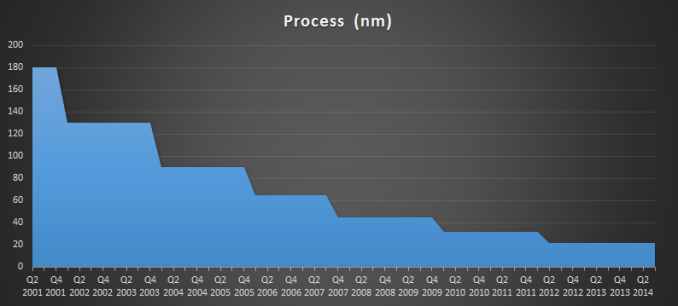
The Data Center Group, which is platforms for server, workstation, networking, and storage computing segments, was also up for Q3, with revenue up to $3.7 billion from $3.178 billion a year ago. Operating Income rose $395 million over Q3 last year to $1.915 billion. Unit volumes were up 6% year-over-year and sequentially, and the ASP was down 1% sequentially and up 9% over Q3 2013.
The Internet of Things group, which is a relatively new division focused on embedded platforms for retail, automotive, home, and transportation, had revenues for the quarter of $530 million, up 12% year-over-year. Revenues were only up $1 million over last year, with $153 million in revenue for this quarter.
The Mobile and Communications Group, which is the division responsible for platforms for tablet and smartphones, as well as mobile communications with baseband processors, RF transceivers, GPS, Wi-Fi, Bluetooth, and power management chips continued its slide for Q3. Revenues were down around 100% year-over-year, at a meager $1 million. This division is also responsible for the majority of Intel’s losses, with a Q3 operating loss of $1.043 billion. For the nine months ended September 27th, this unit has lost $3.096 billion. Intel is pushing hard to drive adoption of its mobile processors, and they seem to be OK with losing money on them in the short term to gain the foothold for the future. We have seen a slew of low priced tablets packing Intel Bay Trail processors, including the HP Stream tablets and just recently a $65 tablet from Emdoor out of Hong Kong. It seems hard to believe that you can buy a Windows tablet for less than the cost to fill your tank with gas, but with both Intel and Microsoft dropping fees, you have to wonder how low things will go before they stop. Luckily for Intel, their strong performances in other segments allows them to be a loss leader in this category, and they must see the long term gain here by not just allowing ARM SoCs to rule the space.
The final division for Intel is the Software and Services segment, which includes McAfee which they acquired a few years ago, and the Software and Services Group which delivers products and services that promote Intel architecture as a platform for development. This unit had a slight bump in revenues, up $13 million over last quarter to $558 million, and operating income was up 97% at $29 million.
Q4 expectations are for revenue to increase slightly to $14.7 billion, plus or minus $500 million and Gross Margin will be 64%, plus or minus a couple of points. With Broadwell soon to be shipping to consumers, Intel is clearly expecting another record quarter. It is great to see the PC market recovering, and one has to wonder to what level it will continue. The expectations of the tablet replacing the PC seem to have subsided for the moment, due to a slump in overall tablet sales. With Broadwell now shipping, we will of course anxiously await Skylake, which will be the new Core architecture available on 14 nm, and the Cherry Trail Atom chips which will also use the new node.Intel Q2 2014 Financial Results (GAAP) Q3'2014 Q2'2014 Q3'2013 Revenue $14.554B $13.831B $13.483B Operating Income $4.918B $3.844B $4.910B Net Income $3.317B $2.796B $2.950B Gross Margin 65.0% 64.5% 58.3% PC Group Revenue $9.2B +6% +9% Data Center Group Revenue $3.7B +5% +16% Internet of Things Revenue $530M -2% +14% Mobile Group Revenue $1M -98% -99.7% Software and Services Revenue $558M +2% +2% All Other Revenue $558M +2% +2%
This was a pretty bullish quarter for Intel, which is generally a good indicator of the overall PC market. They still have their work cut out for them in the mobile segment, but with the other divisions pulling in great revenue and margins, they seem to be content to play the long game on what is certainly a very important segment for the future.
More...
-
10-14-14, 07:30 PM #4398
Anandtech: Video Card Tuesday: $370 R9 290X & Borderlands: TPS Now Shipping
Following up on last week’s Radeon pricing observations, it looks like there has been one final shift in Radeon R9 290 series pricing. While R9 290 has held steady around $299 with the occasional small rebate, we’ve seen R9 290X continue to fall and drop below the roughly $400 price they were going for last week. Finally stabilizing, the R9 290X has leveled out at around $370, with a handful of cards going for even a bit less than that. At $370, the R9 290X is now $30 less than the week before and this puts it just $40 over the MSRP of the GeForce GTX 970.
Though I had been expecting prices to fall further, I am a bit surprised to see R9 290X prices drop below $400 so soon. With GTX 900 series availability still being outstripped by demand, Radeon prices needed to come down from their initial MSRPs in reaction to the NVIDIA launch, though not necessarily this quickly. Regardless, this does mean that the R9 290X is in a better position than it was last week; AMD can’t completely close NVIDIA’s technology advantage gap, but from a price/performance ratio anything that brings R9 290X closer to the similarly performing GTX 970 will help AMD’s partners move cards. In the meantime it’s worth noting that AMD appears to be sticking to their guns on influencing product value through game bundles rather than engaging in a pure price war, as the $370 R9 290X goes hand-in-hand with the continued inclusion of AMD’s Never Settle Forever bundle.
Speaking of game bundles, NVIDIA sends word this afternoon that Borderlands: The Pre-Sequel is now shipping for customers who received vouchers as part of NVIDIA’s recent game bundle. This bundle was never extended to the GTX 900 series – NVIDIA is clearly having no trouble selling those cards right now – but this offer is still active on the higher-end GTX 700 series cards as part of the company’s efforts to sell off the remaining GTX 770/780 inventory.
Fall 2014 GPU Pricing Comparison AMD Price NVIDIA Radeon R9 295X2 $1000 $550 GeForce GTX 980 Radeon R9 290X $370 $330 GeForce GTX 970 Radeon R9 290 $300 Radeon R9 280X
Radeon R9 285$250 Radeon R9 280 $200 GeForce GTX 760
More...
-
-
10-15-14, 12:32 PM #4400
Anandtech: Google Announces the Nexus 6 and Nexus 9 Running Android Lollipop
Today Google has officially announced the newest devices in the Nexus line, just one day before Apple's October event. Both devices have been rumored for some time now, and this is the first time we've seen Google introduce a new smartphone and tablet at the same time. The first device in the announcement is the Nexus 6, made by Motorola. The second is the Nexus 9 tablet made by HTC. To give an overview of how both devices look on paper, I've put together their specifications in a chart below.
Nexus 6 Nexus 9 SoC 2.7GHz Snapdragon 805 (APQ8084) with 4 x Krait 450 + Adreno 420 at 600MHz 64-bit Tegra K1 Denver SoC RAM/NAND 3GB LPDDR3 + 32/64GB NAND 2GB LPDDR3 + 16/32GB NAND Display 5.96" 2560x1440 IPS LCD 8.9" 2048x1536 IPS LCD Network 2G / 3G / 4G LTE WiFi only or 2G / 3G / 4G LTE SKU Dimensions 82.98 x 159.26 x 10.06mm, 184g 153.68 x 228.25 x 7.95mm, 425g WiFi, 436g LTE Camera 13MP Rear Facing with F/2.0 aperture and OIS, 2MP FFC
4K video recording8MP Rear Facing with F/2.4 aperture, 1.6MP FFC Battery 3220 mAh (12.236 Whr) 6700 mAh (25.46 Whr) OS Android 5.0 Lollipop Android 5.0 Lollipop Connectivity 802.11a/b/g/n/ac + BT 4.1, USB2.0, GPS/GNSS, NFC 802.11a/b/g/n/ac + BT 4.1, USB2.0, GPS/GNSS, NFC SIM Size NanoSIM NanoSIM on LTE SKU  y a The Nexus 6 features a similar appearance to Motorola's other devices like the Moto X and Moto G. The plastic back is surrounded by a contoured aluminum frame that curves downward at the top where the 3.5mm headphone jack is located. On the back is Google's traditional Nexus logo, accompanied by an indented motorola logo and a centered rear-facing camera. The front is dominated by a large 5.96" display with a pixel density of 493ppi, and stereo speakers on the top and bottom bezels.
y a The Nexus 6 features a similar appearance to Motorola's other devices like the Moto X and Moto G. The plastic back is surrounded by a contoured aluminum frame that curves downward at the top where the 3.5mm headphone jack is located. On the back is Google's traditional Nexus logo, accompanied by an indented motorola logo and a centered rear-facing camera. The front is dominated by a large 5.96" display with a pixel density of 493ppi, and stereo speakers on the top and bottom bezels.
In terms of its specifications, the Nexus 6 is competitive with all the current Android flagship devices. It packs Qualcomm's latest silicon, a hefty battery, and a high resolution display. However, those premium specs are accompanied by a premium price of $649 outright which is significantly more than the $349 that the Nexus 5 is priced at. The Nexus 5 has been given a new web page along with the other Nexus devices which suggests it isn't going disappear with the launch of this newer, more expensive smartphone.
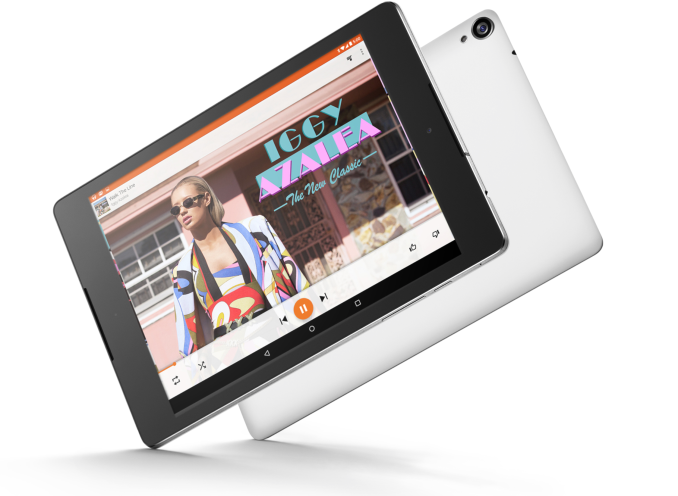
The next announcement was the Nexus 9 made by HTC. This is the first tablet from HTC since the days of Android Gingerbread and Honeycomb where HTC announced they were exiting the tablet market. With its soft touch back, the Nexus 9 is similar in its design to the Nexus 5. Unlike the Nexus 5 which was an entirely plastic construction, the sides of the Nexus 9 are made of brushed metal.
The front of the device is similar to the Nexus 7 with its asymmetrical bezels. The shape of the device is a departure from any tablet Google has produced before, with a 2048x1536 4:3 display like Apple's iPad. Both the 8.9" display size and 4:3 aspect ratio make the Nexus 9 a significantly larger device than the Nexus 7.
The SoC is the biggest point of interest with the Nexus 9. It will be the first device to ship with Nvidia's Project Denver architecture. This is a custom 64-bit ARMv8 architecture designed by Nvidia, a significant departure from the standard ARM cores used in previous Tegra chips. We covered the details about Tegra K1 Denver previously and you can read that over to get a more in-depth look at NVIDIA's new chip.
Along with the new device announcements comes the official name for the next version of Android. Android L is now Android 5.0 Lollipop, and it will ship on the new Nexus 6 and Nexus 9. Lollipop comes with Google's new Material Design and Google's new ART runtime, and will be rolling out to existing compatible Nexus and Google Play Edition devices in the coming weeks.
More...
Thread Information
Users Browsing this Thread
There are currently 47 users browsing this thread. (0 members and 47 guests)





 Quote
Quote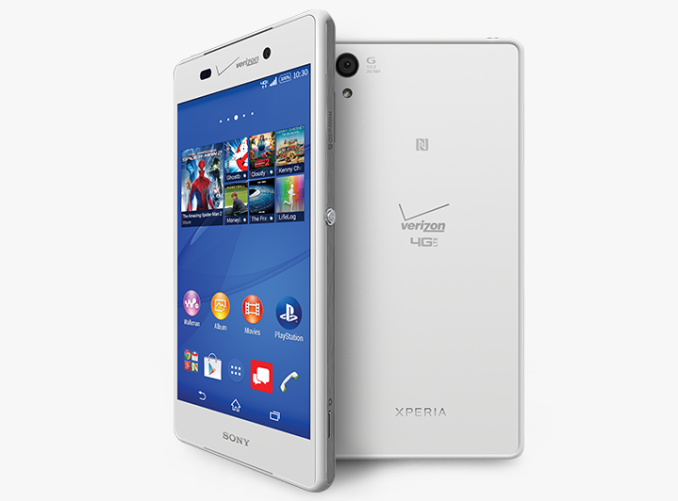
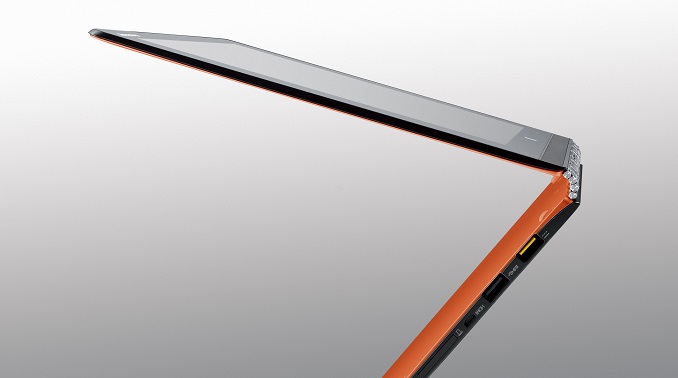
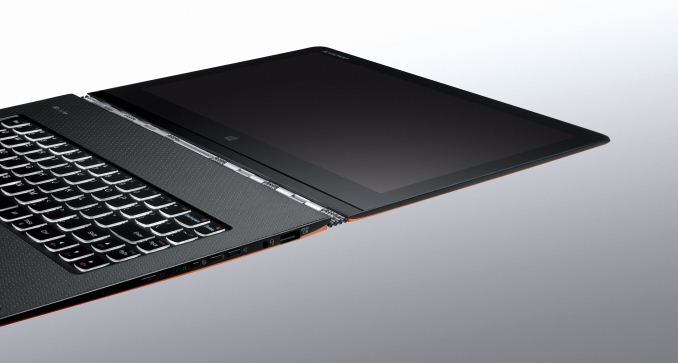


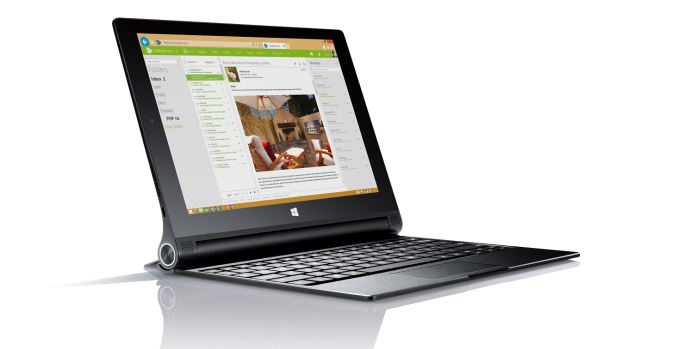
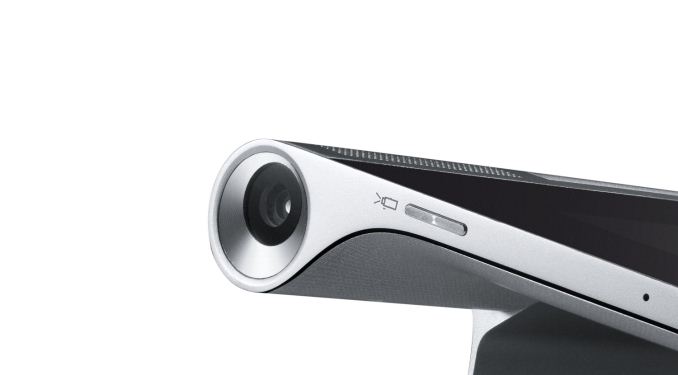


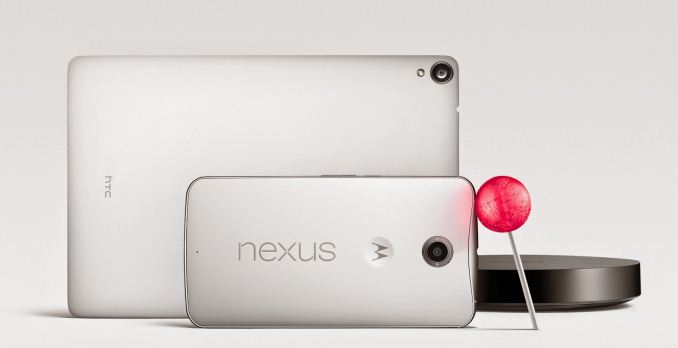
















Bookmarks